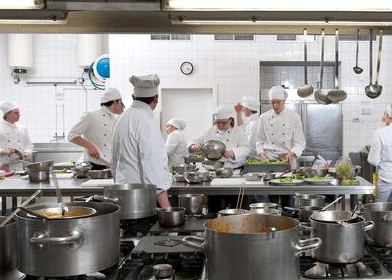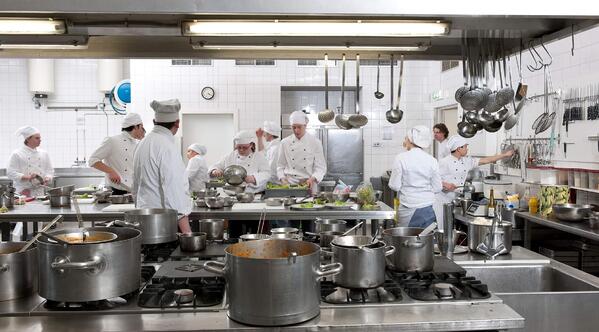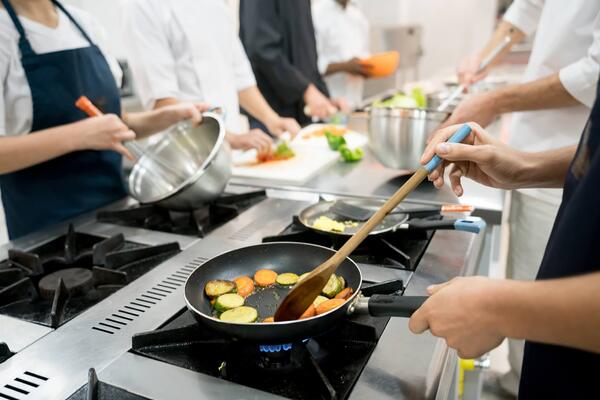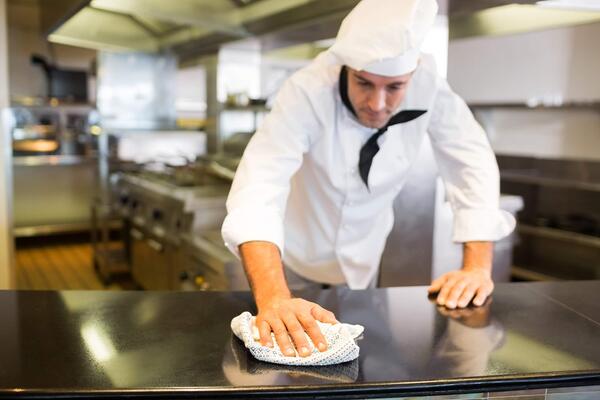
Commercial Kitchen Design 101
Creating a customized commercial kitchen can be one of the priciest considerations when opening a new restaurant. A built-out, specifically-designed kitchen can cost between $250,000 and $350,000. However, the ROI can make the price worthwhile. That's because a well-designed, functional kitchen is likely the most significant factor in your restaurant’s success. Fortunately, you can make smart choices in the planning stages to make your newly designed commercial kitchen a good investment.

Commercial Kitchen Design Considerations
Start with size
The ratios between your kitchen equipment and the size of your kitchen are very important. You probably won’t opt to buy an enormous walk-in freezer if you’re tight on space, but there are many creative solutions an industry expert could offer to help with space constraints. Alternately, if you have a lot of room to work with, you have the luxury of purchasing larger equipment to product larger volumes. Ultimately it's important to understand the output of food your kitchen needs to produce. A kitchen should be designed based how you need it to function.
Think about your commercial kitchen configuration
Depending on your type of establishment, your commercial kitchen will be laid out a little differently. If you’re a fast-casual restaurant with an assembly line food prep style, you’ll want an assembly line configuration. Other types of kitchen configurations include zone style, in which the materials required for each type of food preparation are placed at certain stations, and island style, in which cleaning and cutting is performed along the walls and cooking happens at a central island. It isn't necessary to conform to any of these styles exactly, but they are helpful as a baseline consideration. There is also an option to work with a kitchen design expert to create a custom design that is based on your menu and your specific needs.
Consider ergonomics
No matter which kitchen configuration style you choose, you want to make sure your design is ergonomic for your kitchen staff. This means providing the utmost in comfort, safety and practicality.

Keep a clear path to the exits in case of emergency and choose slip-proof floor tiling that’s comfortable to stand on for a long period of time. Additionally, make sure each of your staff can find an efficient path to necessary tools - don’t build a kitchen full of obstacles.
Rely on your menu to limit energy usage
Consult with your chef to make decisions about where to place equipment. For example, if you put all of your cooktops in one location, then you could save on energy costs for range hoods.
The same is true for your ventilation. If you ventilate and cool your kitchen properly, you’ll save on energy costs, ensure safer working conditions and keep your employees’ productivity up. The power demands of professional equipment are often a place where people get tripped up with their design. Be sure to check equipment specs closely and know how it will be installed in your space.
Prioritize versatility
Even if you construct the perfect kitchen for today’s menu, will it still be ideal for meeting customer expectations a year from now? Flexible/adaptable equipment is important in this ever-changing industry. Another benefit of dual-purpose equipment is quickly being able to try new items and test out trendy items. If possible, choose equipment that can shift in purpose and even in arrangement. When you are comparing equipment, you can ask a specialist to highlight pieces that are capable of what you need.
Simplify cleanliness and sanitation
Designing your kitchen in a way that helps you clean it can make your life and your staff’s lives much easier. One of the best ways to help in cleaning tasks is to provide clean storage solutions. While shelves aid in reaching cookware during service, cabinets with doors for storage are actually easier for maintaining cleanliness on regular schedules.
Read our post on sanitary food storage for more tips.

Partner with an expert kitchen designer
According to restaurateur John Kunkel, one of the most devastating factors for small restaurant owners is underestimating kitchen construction costs. If you’re not certain how much your kitchen design will run you, check with an experienced kitchen design consultant. Our team of design professionals are industry veterans and can help you build or remodel your kitchen, as well as important aspects like adherence to safety codes, timely project management and successful equipment installation.